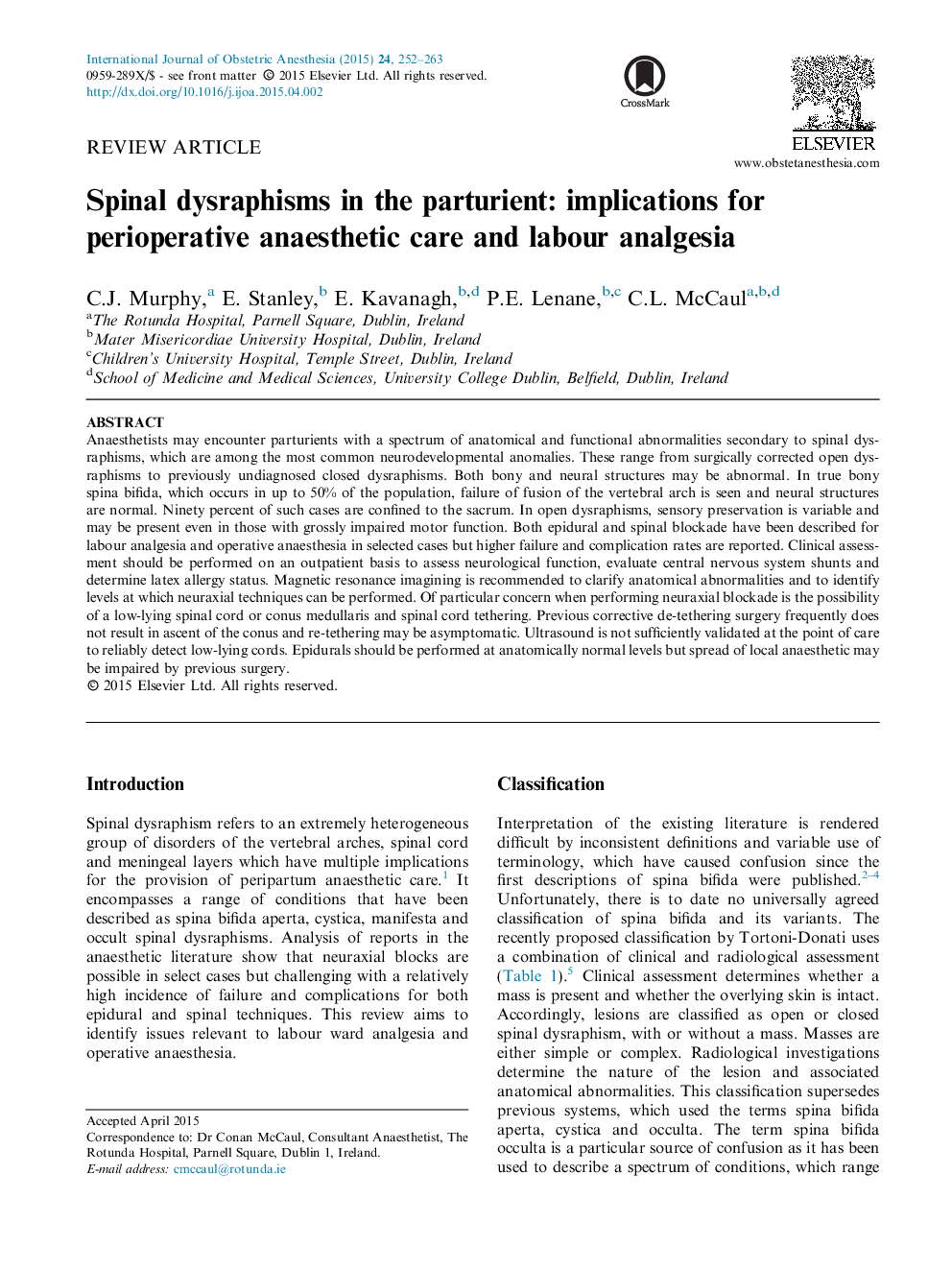| Article ID | Journal | Published Year | Pages | File Type |
|---|---|---|---|---|
| 2757525 | International Journal of Obstetric Anesthesia | 2015 | 12 Pages |
•Spinal dysraphisms are among the most common neurodevelopmental anomalies.•Bony and neural structures may be anatomically abnormal.•Neuraxial blocks are possible in selected patients.•The incidence of complications and failure is relatively high.•Magnetic resonance imaging can clarify anatomical abnormalities and assist decision making regarding neuraxial techniques.
Anaesthetists may encounter parturients with a spectrum of anatomical and functional abnormalities secondary to spinal dysraphisms, which are among the most common neurodevelopmental anomalies. These range from surgically corrected open dysraphisms to previously undiagnosed closed dysraphisms. Both bony and neural structures may be abnormal. In true bony spina bifida, which occurs in up to 50% of the population, failure of fusion of the vertebral arch is seen and neural structures are normal. Ninety percent of such cases are confined to the sacrum. In open dysraphisms, sensory preservation is variable and may be present even in those with grossly impaired motor function. Both epidural and spinal blockade have been described for labour analgesia and operative anaesthesia in selected cases but higher failure and complication rates are reported. Clinical assessment should be performed on an outpatient basis to assess neurological function, evaluate central nervous system shunts and determine latex allergy status. Magnetic resonance imagining is recommended to clarify anatomical abnormalities and to identify levels at which neuraxial techniques can be performed. Of particular concern when performing neuraxial blockade is the possibility of a low-lying spinal cord or conus medullaris and spinal cord tethering. Previous corrective de-tethering surgery frequently does not result in ascent of the conus and re-tethering may be asymptomatic. Ultrasound is not sufficiently validated at the point of care to reliably detect low-lying cords. Epidurals should be performed at anatomically normal levels but spread of local anaesthetic may be impaired by previous surgery.
